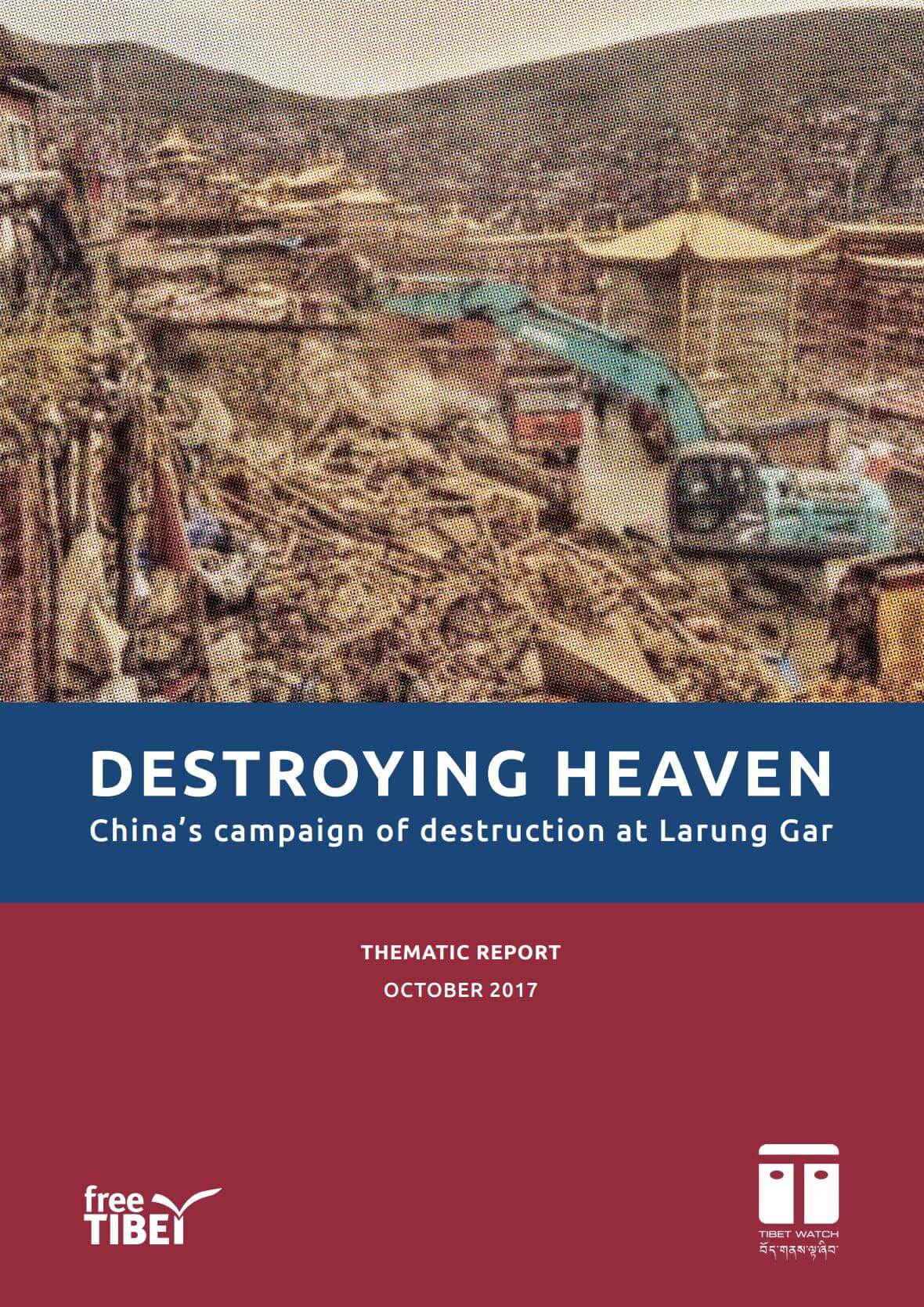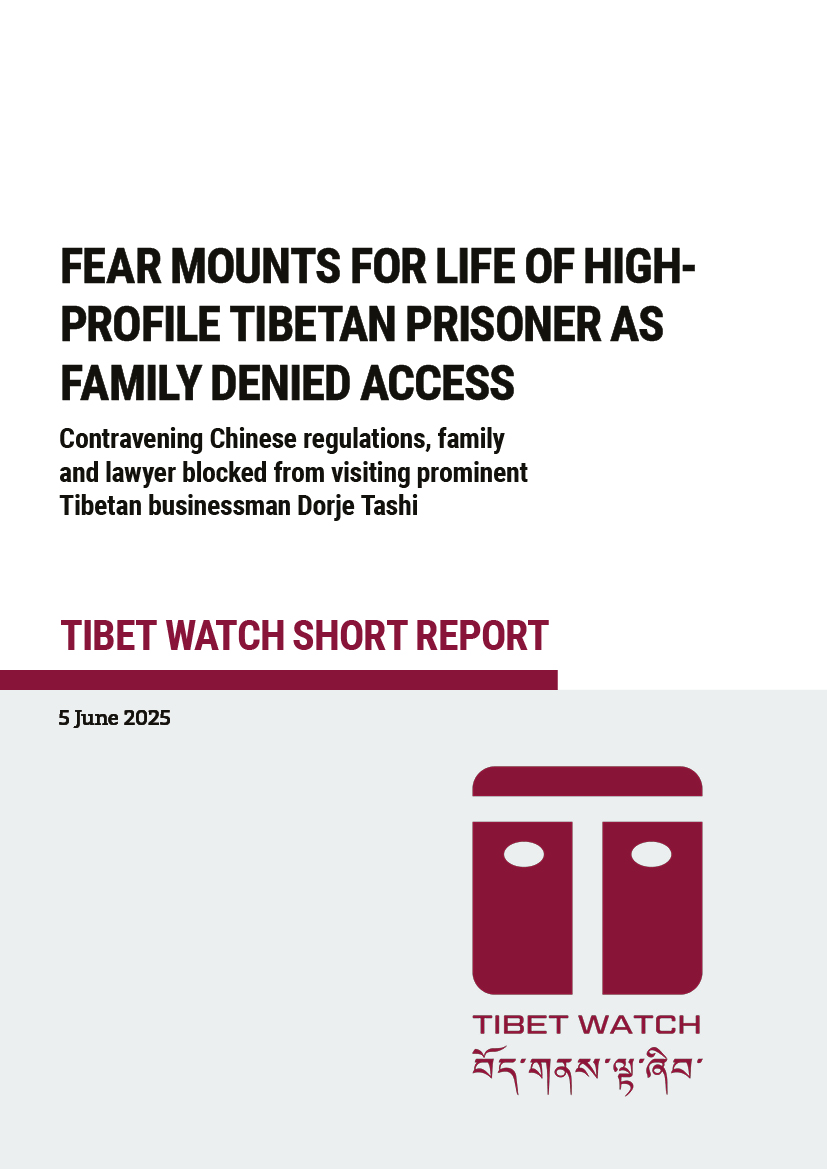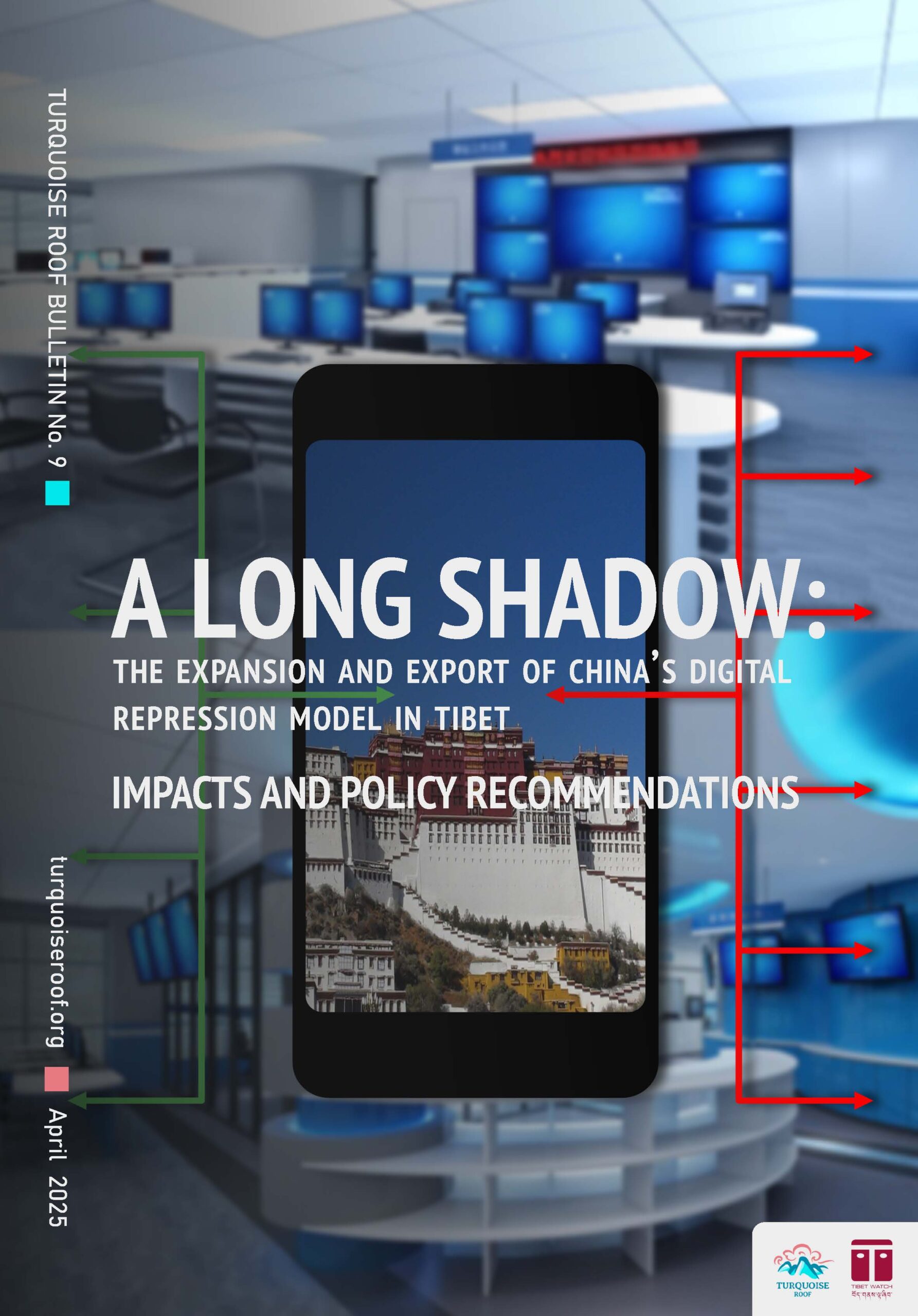
Introduction
In July 2016, regional authorities and Chinese workers began carrying out a plan to drastically reduce the population of Larung Gar, the largest Tibetan Buddhist institute in the world.
The plan required residents to be evicted and their houses to be torn down. Residents of Larung Gar, which lies in occupied eastern Tibet, were not consulted about the plan, despite claims by Chinese authorities that the aim was to protect the safety of the residents by reducing overcrowding and the risk of fire. After one year of forced removals of residents and demolitions of their homes, extensive damage has been done to the site.
Over 4,800 people have been removed and 4,700 buildings, mostly residences, have been destroyed since July 2016. The demolitions campaign has been condemned by Tibetans; Tibet supporters; international bodies, such as the European Union; and United Nations special experts. In this joint report, Free Tibet and Tibet Watch will show the scale of the damage to Larung Gar and the impact on its residents.
Using satellite imagery from before and after demolitions took place, testimonies from residents and accounts from journalists who have gained access to Larung Gar, this report will argue that the demolitions have not been motivated by concerns over the residents’ safety. Instead, the objectives behind the destruction appear to be the elimination of an alternative source of authority to Chinese Communist Party (CCP) rule and the reduction of an influential and highly respected Tibetan Buddhist site to a tourist destination.
Tibet’s Buddhist institutions play an integral role in the day-to-day lives of Tibetans. Teachers, students, monks and nuns within Tibetan Buddhist institutions are some of the key drivers behind the resistance to Chinese occupation. The campaign of destruction at a respected religious institution like Larung Gar should be seen as an attempt to limit the influence of Buddhism on the Tibetan people and, more broadly, an attack on Tibet’s culture, religion and way of life.


